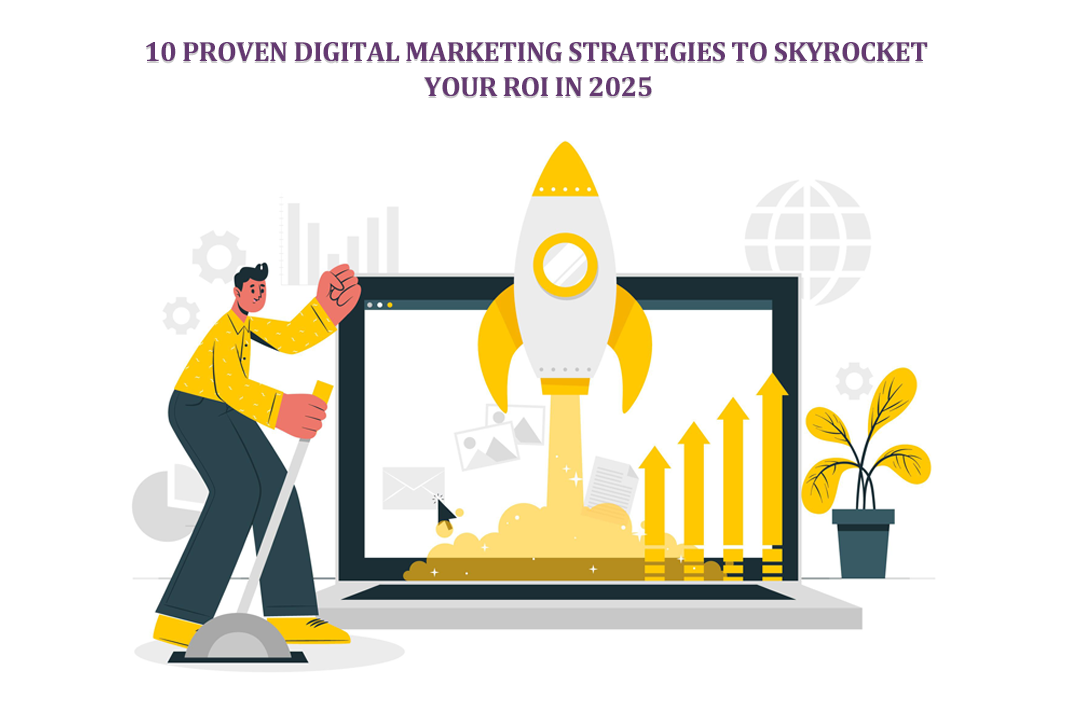What is the customer journey, and how to map it through CRM?
The customer journey holds immense importance within the modern business paradigm as it encompasses the entire spectrum of interactions between customers and your brand, spanning from initial awareness to long-term loyalty. Recognizing the significance of this journey and taking steps to optimize it can result in heightened customer satisfaction, improved retention rates, and substantial revenue growth. Leveraging a robust Customer Relationship Management (CRM) system such as Salesforce CRM proves invaluable to map and navigating the customer journey effectively. In this article, we will explore what a customer journey map is and how to map it through CRM. As we delve into the depths of the customer journey, we will establish how CRM can be a game-changer in achieving a seamless and rewarding customer experience.
Quick Links
What is a Customer Journey Map?
A customer journey map is a visual representation that outlines the various touchpoints and interactions a customer has with your business. It helps identify areas for improvement and allows you to create a seamless, personalized experience for your customers.
Benefits of Mapping the Customer Journey
- Enhanced Customer Experience: Mapping the customer journey helps businesses understand their customers’ needs, preferences, and pain points, enabling them to create tailored experiences that resonate with their target audience.
- Increased Customer Retention: By understanding and addressing customer concerns at each stage of the journey, businesses can foster long-term relationships and reduce churn rates.
- Optimized Marketing Efforts: Analyzing the customer journey enables businesses to identify high-performing channels and strategies, allowing them to allocate resources more effectively and improve ROI.
How CRM Systems Support Customer Journey Mapping
Did you realize that in 2021, close to 70% of online shoppers chose to abandon their shopping carts? It’s pretty puzzling to consider why a customer would invest time browsing through a store, carefully selecting products, only to abandon their coach at the final moment.
The customer journey encompasses your brand’s position within the buyer’s journey, representing the crucial touchpoints where you engage with customers as they progress through different stages. By crafting a comprehensive customer journey map, you proactively take charge of every touchpoint throughout the journey rather than leaving them to chance. This strategic approach allows you to optimize each interaction and guide customers seamlessly from one stage to the next, ensuring a cohesive and delightful experience. This is where the power of CRM data comes into play, empowering you to shape a customer-centric journey that drives satisfaction and loyalty.
By leveraging a robust CRM system like Salesforce CRM, businesses can uncover valuable insights and better understand customer behaviors and motivations. With this knowledge, companies can proactively address cart abandonment issues, personalize customer experiences, and implement strategies to minimize such occurrences. In our exploration of the customer journey, we not only delve into the significance of CRM in optimizing the customer experience but also shed light on tackling cart abandonment challenges head-on. The following strategies can come in handy:
Data Collection
A CRM system gathers valuable customer data, such as contact information, purchase history, and preferences. This data provides insights into customer behavior, enabling you to tailor your marketing strategies and enhance their experience with your brand.
Segmentation
CRM systems allow you to segment customers based on demographics, behaviors, or preferences. Understanding these segments will enable you to create targeted marketing campaigns and personalized experiences that resonate with each group.
Automation
CRM software automates tasks like sending emails, scheduling appointments, and tracking customer interactions. This automation streamlines the customer journey, ensuring timely and consistent communication at every stage.
Integration
CRM systems can integrate with other tools, such as marketing automation platforms, social media channels, and analytics tools. These integrations provide a holistic view of the customer journey, helping you identify gaps and opportunities for improvement.
Measurement and Analysis
CRM tools offer robust reporting and analytics capabilities, allowing you to measure the effectiveness of your marketing efforts and make data-driven decisions. You can continuously refine your strategies by analyzing the customer journey and driving better results.
Salesforce CRM: A Powerful Tool for Mapping the Customer Journey
Salesforce CRM is a leading CRM platform enabling businesses to manage customer relationships effectively. It offers several features that support customer journey mapping:
Salesforce’s Comprehensive Data Management
Salesforce CRM provides a unified platform for collecting, storing, and managing customer data. It allows you to create detailed customer profiles, track interactions, and gain insights into customer behavior patterns.
Advanced Segmentation Capabilities
With Salesforce CRM, you can segment customers using various criteria, such as demographics, purchase history, or engagement levels. This enables you to deliver targeted and relevant content, improving customer satisfaction and driving higher conversion rates.
Automation and Workflow Management
Salesforce CRM offers powerful automation features, streamlining routine tasks and ensuring consistent communication throughout the customer journey. Its workflow management tools allow you to create custom processes and trigger actions based on specific criteria, enhancing efficiency and personalization.
Integration with Third-Party Tools
Salesforce CRM integrates seamlessly with various third-party applications, including marketing automation platforms, social media management tools, and analytics solutions. These integrations enable you to gather comprehensive insights and optimize your marketing efforts across multiple channels.
Robust Reporting and Analytics
Salesforce CRM’s reporting and analytics tools provide valuable insights into the customer journey, allowing you to identify trends, measure campaign performance, and make data-driven decisions. With its customizable dashboards and real-time reporting, you can monitor key metrics and make timely adjustments to your strategies.
Best Practices for Mapping the Customer Journey with Salesforce CRM
- Define Your Goals: Before mapping the customer journey, establish clear objectives for what you want to achieve. This could include improving customer satisfaction, increasing conversion rates, or reducing churn.
- Identify Key Touchpoints: Determine the critical touchpoints in your customer journey, such as website visits, email interactions, social media engagement, or support requests.
- Segment Your Customers: Use Salesforce CRM’s segmentation features to create customer groups based on shared characteristics. This will enable you to deliver personalized experiences that resonate with each segment.
- Monitor and Measure Performance: Utilize Salesforce CRM’s reporting and analytics tools to track your marketing efforts’ effectiveness and identify improvement areas.
- Continuously Optimize Your Strategies: Analyze the data from Salesforce CRM to identify trends, gaps, and opportunities. Use these insights to refine your strategies, improve customer experiences, and drive better results.
Conclusion
In conclusion, mapping the customer journey through a CRM system like Salesforce CRM enables businesses to understand their customers better, create personalized experiences, and optimize marketing efforts. By leveraging the power of CRM, you can enhance the customer journey, leading to long-term customer satisfaction and loyalty.
Author’s Bio:

Priya Kumari engineers content for enhancing customer experience & manifesting organizational excellence. With 9+ years of experience, she writes an array of topics on artificial intelligence, web-development, technology, blockchain, marketing, web monetization, startup, entrepreneurship, machine learning, emerging technology, cloud, Kubernetes, software development, cryptocurrency, business, data science, B2B Marketing, FinOps, FinTech, Banking, and Finance.
How a Mini Cart Transformed My Store’s Shopping Experience
Okay, real talk—running an online store is hard. You think you’ve got everything figured out, you…
0 Comments9 Minutes
Balancing Your Security Initiatives With Industry Compliance Requirements
Managing a business today comes with a number of daily battles that need to be fought. Resources…
0 Comments11 Minutes
Best plugins to enhance the customer shopping experience
Customer experience is a key part of every online store. A good experience helps customers find…
0 Comments7 Minutes
AI Content Generating Tools: Is It A Collaboration or Competition For Content Creators?
Artificial Intelligence (AI) has created waves in content creation in business verticals. From…
0 Comments13 Minutes
How to boost user engagement and conversion in WooCommerce?
One thing that is not changing today or in the coming future is the impact user engagement has on…
0 Comments9 Minutes
10 Proven Digital Marketing Strategies to Skyrocket Your ROI in 2025
Why do some companies have a more robust online presence than others? Marketers know very well…
0 Comments12 Minutes
Why Is Woocommerce Suitable For Small Businesses?
Are you finding yourself more confused than usual when choosing your online business’s platform?…
0 Comments8 Minutes
How to Conduct a Content Gap Analysis to Boost Organic Traffic
Your website is not getting enough organic traffic because you are missing out on valuable content…
0 Comments12 Minutes








